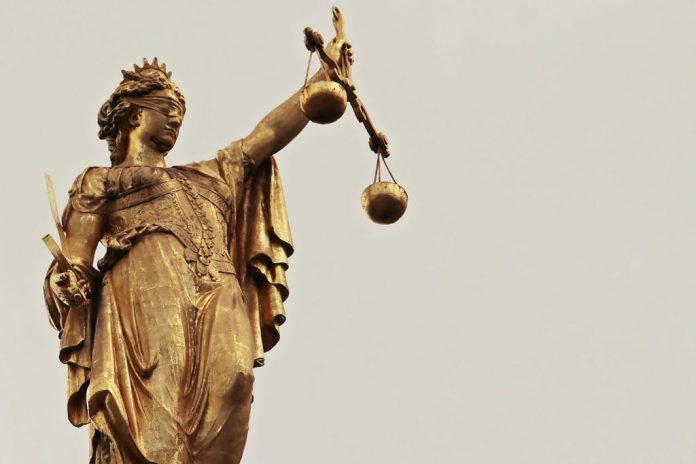This article is written by Sahaja, from NALSAR University of Law, Hyderabad. This article talks about the access granted to citizens under the RTI and the judicial transparency in India.
Table of Contents
Introduction
A government that operates in secrecy not only works against democratic dignity but also buries itself within its own grave, as Justice Krishna Iyer put it in the Maneka Gandhi case (1978). The right to receive information is intrinsic under Article 19(1)(a) of the Indian Constitution, which states that all citizens have the right to freedom of speech and expression.
Article 311(2) and Article 22(1) of the Indian Constitution, in addition to Article 19(1)(a), provide for the right to information. A government employee has the right to know why he is being dismissed, removed, or demoted under Article 311(2), and to file a complaint against the order. A person can learn the reasons for his or her detention under Article 22(1).
Background on the RTI (Right to Information) Act, 2005
The Freedom of Information Act was passed by the Indian Parliament in 2002. Due to a lack of notification by the central government, this Bill could not come into effect after receiving the President’s assent. Because the Bill failed to achieve its goals, the UPA government introduced a new law in 2005, called the Right to Information Act, 2005.
The purpose of this Act was to strengthen the fundamental right of ‘freedom of speech’ guaranteed by the Indian Constitution. RTI is an implied fundamental right because it is enshrined in the Indian Constitution’s Article 19.
The process for requesting the information is quite straightforward; anyone can make a request in writing on plain paper for a small charge. According to the Act, the information must be delivered within 30 days after the request. For the aim of appealing, many states have formed State Information Commissions. The Act also establishes a Central Information Commission.
Access to judicial records under RTI
The RTI Act gives everyone access to all publicly available and existing information. A combined reading of Section 3 and the definitions of “information” and “right to information” in Clauses (f) and (j) of Section 2 of the Act makes this evident. An applicant may access information held by a public authority in the form of data or analysed data, abstracts, or statistics, subject to the exemptions set forth in Section 8 of the Act. However, where the information sought is not part of a public authority’s record and is not required to be kept under any law or the public authority’s rules or regulations, the Act does not obligate the public authority to collect or collate such non-available information and then provide it to an applicant.
The information does not refer to all data; rather, it refers to a government agency’s recorded, maintained, and disseminated data. A citizen has a right to access information kept by or under the jurisdiction of any public authority, and public authorities are required to explain reasons for their administrative or quasi-judicial judgments to those who are impacted.
Any information already in existence and legally accessible to public authorities can be obtained by an applicant. However, they would be unable to obtain any information as to why such an opinion, advice, or other document was issued, particularly in cases involving judicial rulings. Answers to such questions could not have been with the government, nor could he have had access to the information.
Importance of transparency
Transparency is fundamental and one of the most important characteristics of a democracy. Transparency assists citizens in exercising control over and involvement in public affairs. Transparency should involve citizens’ ability to request access to public information, as well as the state’s responsibility to generate data and make it widely available to residents.
In a democratic country, judicial transparency is very important. Judicial transparency is particularly important in judicial institutions because it fosters accountability, combats corruption, and aids in eliminating arbitrariness. This approach promotes greater judicial independence and boosts public confidence.
A policy of transparency and access to public information can improve the level of trust and legitimacy of judges and others working in the justice system, allowing society to better understand its operation, challenges, and limitations. Thus, it can also be said that judicial transparency reassures justice.
A large number of court decisions have an impact on our daily lives. Every criminal case is essentially an opportunity to hold the police accountable, just as every writ petition is essentially an opportunity to hold the government accountable. Similarly, many commercial disputes provide an opportunity to learn more about businesses and how commercial translations are carried out in the country. Such cases contain realms of data that can help various stakeholders, including citizens, journalists, researchers, stockholders, and others, better understand the consequences of these choices.
The notion that all judicial hearings must take place in open court unless banned by law for justifiable reasons, is well-established. However, while it is perfectly permissible for anybody to sit in court and take notes, the courts make it as difficult as possible to acquire pleadings directly by limiting access to records.
Transparency is very important for the smooth functioning of a democratic framework and is one of the characteristics that define a democratic nation.
Judicial transparency
The Supreme Court, in a recent decision in the Chief Information Commissioner v. High Court of Gujarat (2020), barred citizens from obtaining access to court records under the RTI Act. According to the Court, such records can only be accessed under regulations established by each High Court under Article 225 of the Constitution. Though this ruling does not restrict the RTI Act from being used to the administrative side of the court, it does effectively close the door to accessing the millions of court records submitted on the judicial side under the RTI Act.
The Supreme Court’s decision in this matter was based on Section 22 of the RTI Act, which provides that the RTI Act will take precedence over any other law to the extent that it conflicts with the former. The phrasing of the provision suggests that the RTI Act’s drafters were well aware that it would conflict with other laws, and they intended to make sure that the RTI Act’s procedure overrode any existing legislation’s procedure. Despite Section 22’s crystal-clear wording, the Supreme Court and, in earlier instances, the High Courts have reached the opposite conclusion.
Case allotment
The Chief Justice of India has sole power over case allocation. When the Chief Justice feels like it, he assembles benches and transfers cases. When it comes to assigning certain cases to specific judicial authorities, there is no established system, method, or criteria. Knowing and predicting who would provide what kind of justice, the Chief Justice might use this information to his advantage and allot cases accordingly. This isn’t entirely corrupt, but there’s a vacuum here because no judge knows where or how he’ll be transferred or whose cases will be assigned. Such circumstances arise as a result of a lack of transparency and accountability.
About such discretion given to the Chief Justice of India, on January 12, 2018, a rebellion against the then Chief Justice of India was in the news. Some of the judges of the Supreme Court had written to the judge for an explanation for the allotment of certain cases.
Sexual harassment
Another growing source of worry in the Indian legal system is sexual harassment in the judicial office. The recent events in the office of the Chief Justice of India have pushed this issue to the forefront. In the Supreme Court, former Chief Justice of India Justice Ranjan Gogoi was accused of sexually harassing a female employee.
The Supreme Court issued a major decision in 1997, laying forth criteria for businesses to follow when dealing with sexual harassment accusations. The Supreme Court of India had established the “Vishaka Guidelines.” The guidelines in the Vishaka decision describe how a sexual harassment case should be handled, but they haven’t been followed in the court offices, and there hasn’t been any public discussion of how the cases have been handled. This evidently puts forth the fact that there needs to be more transparency on how such matters are being handled and if the perpetrators are in fact being held accountable when such issues take place.
After the recent judgments, several questions as to why the guidelines weren’t followed, why there was no committee set up to implement the guidelines, and the question of if there is any rule or guideline that needs to be followed if such an offence is committed by the chief justice were brought up.
Judicial independence
Judicial independence is employed as a blanket over all difficulties and as a shield against accountability for the problems that have arisen. There is a lack of openness in the court system’s operation. Since the judges are judging themselves, there is no sense of accountability. Although the concept of Natural Law stipulates that “no man can be a judge in his own cause,” we find judges selecting and adjudicating themselves in the judiciary.
Without a question, the judicial system must be independent, as it is also the foundation doctrine, but it must also be competent in its own right. Judicial independence is not an excuse for wrongdoing or arbitrary decisions. In this system, only accountability and transparency will assure competency and efficacy.
Solutions to increase transparency
Some of the practices that can be adopted to increase judicial transparency in India would be to provide access to internal information about the judiciary and to note the importance of publishing judicial decisions.
Access to internal information
The use of transparent and open processes in the appointment of judges serves to shield judges from undue external influences such as those exercised by other branches of government or interest groups. Transparency also aids in the selection of individuals who meet the most fundamental international qualities, such as strong professional standing and essential legal abilities and expertise.
Another key strategy to increase judicial transparency is to collect, analyse, and share statistical data. Such data allows for the analysis of performance, the identification of accomplishments, the detection of problems, and the development of strategies to address them.
Access to information and decisions
It is critical to provide public access to the courts, including through the media, in order to raise awareness of the judiciary’s activities. The recording of court sessions by video, audio, or transcription is one example of such access. The press also plays a vital role in alerting citizens about the important work of the courts, particularly in matters of broad public importance. This has been actively implemented by many High Courts like Delhi, Bombay, Gujarat, Kolkata, and Madhya Pradesh by live-streaming court proceedings. Steps like this ensure greater transparency and aid people to educate themselves on judicial procedures and laws of the country.
Access to Supreme Court decisions is especially important since they affect government institutions and actions in general, not just the cases at hand. Such judgements may concern individual rights or state obligations, and hence have a significant impact on how citizens’ rights are viewed and safeguarded.
Conclusion
The guardian of our Constitution is the country’s judicial system. When all other government machinery fails to do its duty, the judiciary is held accountable. The Indian people’s confidence and faith are a precondition for the judiciary to function effectively.
Judicial accountability is desired or demanded since the judiciary is the most powerful branch in delivering justice to the first human right to the people. The road to judicial accountability is long and difficult, but adequate accountability for such a strong and crucial organ as the Indian court is critical for the country’s rule of law and democracy to survive.
Transparency also leads to the proper functioning of a democratic country whereby people have the right to receive information and make informed decisions regarding the government or the country they live in.
As the Supreme Court must also serve as the protector of the fundamental rights of every citizen in the country, it is important to make sure that the people’s right to receive information which is implicit under Article 19(1)(a) of the Indian Constitution is not affected. We can soon have an efficient and responsible judicial system where the rule of law prevails if we take a few measures toward a more transparent judiciary.
References
- http://www.legalserviceindia.com/article/l188-Right-to-Information-in-India.html
- http://www.jcreview.com/fulltext/197-1578480534.pdf
LawSikho has created a telegram group for exchanging legal knowledge, referrals, and various opportunities. You can click on this link and join:
https://t.me/joinchat/J_0YrBa4IBSHdpuTfQO_sA
Follow us on Instagram and subscribe to our YouTube channel for more amazing legal content.
 Serato DJ Crack 2025Serato DJ PRO Crack
Serato DJ Crack 2025Serato DJ PRO Crack











 Allow notifications
Allow notifications



